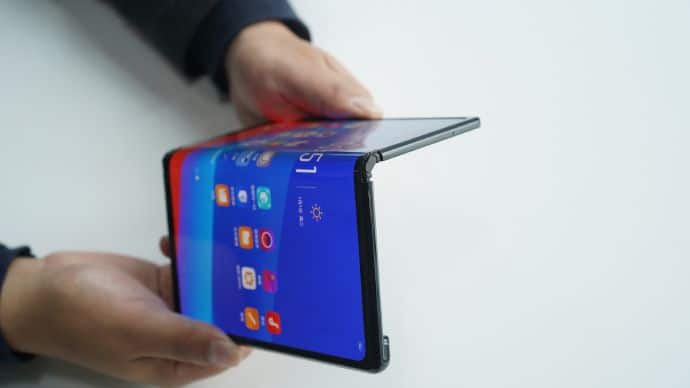The Mobile World Congress 2019 recently concluded in Barcelona. Despite the absence of Samsung, which held its own Unpacked event earlier in February, the annual mobile tech fest offered a plethora of exciting updates for smartphones, tablets, and watches for
In case you missed out on the updates from the event (including a major tussle between telecom major Huawei and U.S. officials over privacy breach), we have all the interesting stuff laid out for you in a delectable tech platter below. Learn about new foldable smartphones, quintuple cameras, the latest on 5G technology and more!
5G Internet Speeds
It’s time to bid adieu to 4G. Well, not in the immediate future, but probably later this year. At MWC 2019, 5G networks were a major highlight, signalling a radical shift in connectivity for the future. Manufacturers showcased high-end phones having 5G capability and there were demonstrations galore for what 5G networks could enable in the future. For instance,
Conducting Remote Surgeries In Real-Time
Steering A Truck In Gothenburg From Barcelona In Real-Time
Conducting Jam-Sessions Between Musicians In Far-Flung Places
A future with 5G means where every almost every tech aspect of your life is connected to high-speed internet – be it appliances, phones or cars. Internet speeds have usually been hampered by distance, but with 5G, everything is going to witness a massive shift. How is this possible? Because of the 3 main benefits offered by 5G:
- High capacity
- Ultra-low latency (the time taken for an internet loading request to reach the datacentre and return to the device)
- Blazing fast speed (5G is 4G x 1000)
- What does this mean for video streaming? You will be able to instantly stream 4K videos and play video games with high-end graphics right from your mobile phones!
Foldable Screen Phones
For years, smartphone manufacturers have been talking about foldable phones that would have a flexible display and offer a dramatically different mobile experience. At MWC 2019, the foldable revolution was in full flow, with several concept phones being showcased. Here is a list of the major ones released during the event:
Samsung Galaxy Fold
We had a first look at the Samsung Galaxy Fold at the company’s Developer Conference last year. At MWC 2019, the Korean tech giant finally revealed the phone’s official name and its scheduled launch date (April 2019) at a price of $1980
Features of the Galaxy Fold:
- Two displays – 4.6 inch display with 21:9 aspect ratio
- The above opens up like a book, revealing a 7.3 inch flexible display
- Design gives better protection than for other foldable phones
Huawei Mate X
Yes, despite all the controversy surrounding it, Huawei marches on undeterred and at MWC, it showcased its foldable 5G phone – the Huawei Mate X. Unlike the Samsung Galaxy Fold, the Mate X uses a Falcon Wing design to give it a bigger appearance.
Touted as the “world’s slimmest” foldable phone (though this category is still in infancy), it is just 11 mm thick, compared to the Samsung Galaxy Fold, which is 17 mm thick.
Features:
- 8-inch display when folded,
6.6-inch screen display for normal smartphone display 180 degree display- 19.5:9 aspect ratio
The price, however, is a bit on the higher side at $2,600.
TCL’s DragonHinge Prototype
At MWC 2019, TCL showcased its DragonHinge-based foldable phone prototype. In case you were not aware, DragonHinge is TCL’s patented hinge design. Most of the displays were concept models and mock-up designs, and not actually functional pieces. A commercial model isn’t expected to be on display until 2020.
Oppo’s Foldable Phone
Just like the Huawei Mate X, the Oppo foldable phone has an outward-folding display with a sidebar including all the camera equipment.
Phone Batteries That Can Run For a Week
Apart from the numerous, innovative phones on display, there were also the ones catering to that ever annoying need – longer batteries. We all know how our phones die out pretty quickly. Unless we use a basic phone, all the functions and operations in a smartphone make sure that the battery fizzles out in less than a day.
So how about having a phone that lasts almost a week?
Enter the Energizer’s Power Max P18K Pop.
A fairly bulky phone that looks like a small brick, this phone has an 18,000 mAh battery with a 6.2-inch screen.
Will you use it?
Phone With Five Cameras
Gone are the days of having a single camera on the back of your phone.
Using a dual camera setup?
Well, even that is an obsolete piece of history!
At MWC 2019, Nokia showcased its new 9 PureView phone, which has FIVE 12 MP cameras set in an array pattern at the back. Flash and a depth-sensor are also included as well.
According to Nokia, this new quintuple camera setup captures nearly 10 times the light collected by a single camera. Imagine how useful this would be for Instagram.
The sample pics taken by the new Nokia phone look simply incredible!
Level Up in Augmented Reality with HoloLens 2
Virtual Reality has been in the news for quite some time, but let’s admit that it is a technology that is still in a nascent stage, with limited applications, and issues of scale.
If you want to define the future, it has to be with Augmented Reality (AR) i.e. the system in which information is overlaid on real-life objects through the use of glasses.
While we have seen the success of AR in games like Pokemon Go, it’s time to now unlock the next level in AR to get a more immersive experience of the real world.
At MWC 2019, we saw that precisely in the form of the Microsoft HoloLens 2.
According to Microsoft, the HoloLens 2 is aimed at businesses which can use AR technology to improve communication, get a better understanding of things and eventually reduce costs.
For instance, architects could use this tech to overlay their digital design on real-world objects.
The HoloLens 2 has improved hardware, a better field of view and eye tracking to help users select the items in AR.
Though the price tag is quite steep at $3,500, it is expected to see industries to be early adopters of the technology instead of being a mass consumer product. Over time, the costs are also anticipated to go down and then perhaps, Microsoft may take it mainstream.














Leave a Reply